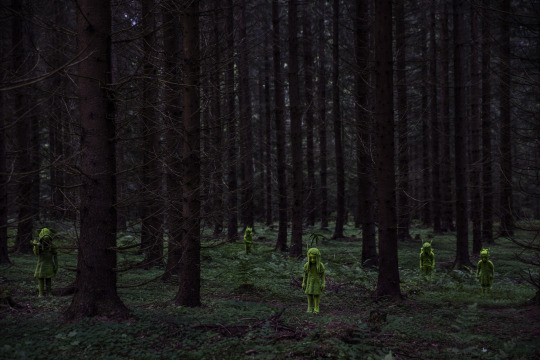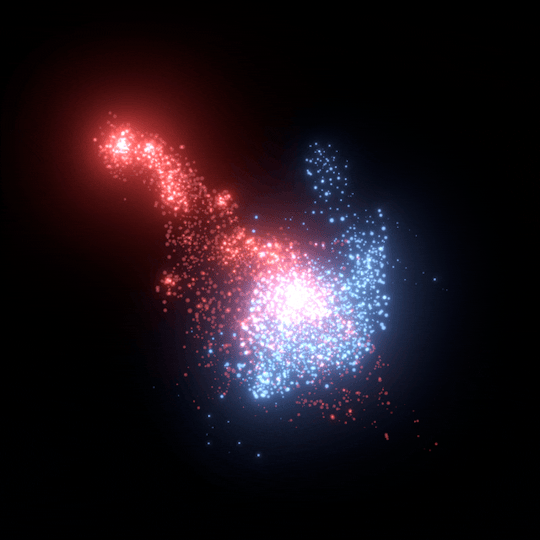#flocking
Text



late flocking postttttt :)
645 notes
·
View notes
Text
Ok what the hell is a “flocking paleostream?” Google isn’t helping and I keep seeing it everywhere. It feels like code for something and I’m out of the loop
420 notes
·
View notes
Text

1960s Josef Originals Flocked Fuzzy Baby Dragons
(Image ID: Two flocked green dragon figures. They have brown glass eyes. The tips of their wings, tails, and hair are orange. They have small brown freckles.)
#png#transparent#kidcore#nostalgia#nostalgiacore#toycore#toywave#toys#flocked#flocking#flocked figure#dragon#fantasy#fantasycore#dragoncore#green
408 notes
·
View notes
Text

Results from todays flocking paleostream.
I wasn’t there for all of it and couldn’t finish this one so I finished it later
Balaur bondoc (my idea) upside down try a get the fruip
#paleoart#pterosaur#hatzegopteryx#Balaur#bondoc#Balaur bondoc#bird#avian#avialan#dinosaur#paleostream#flocking#tree#nature#hateg island#fruit mentioned
158 notes
·
View notes
Text






Flocked squishy hamsters from ddqqa3 on tiktok!
#stimboard#moodboard#stim#stimblr#stim gifs#gifset#gif#squishy#jiggly#hamster#hamsters#white#brown#orange#stim toy#stim toys#flocking#fuzzy#brush
178 notes
·
View notes
Text






Get ready for a shop update September 1st at 1pm mountain time! You can preview what will be available now by checking my shop out here:
501 notes
·
View notes
Text



Mossy Figures Wander Through Woodlands and City Streets in Kim Simonsson’s Flocked Ceramic Sculptures
470 notes
·
View notes
Text




Results from the Flocking #paleostream Tamisiocaris, Borhyaena, Coronodon and Turnersuchus.
247 notes
·
View notes
Text

Boids from the paper by Craig W. Reynolds that introduced boids as a concept, giving name to a method of studying flocking phenomena.
Flocks, Herds, and Schools: A Distributed Behavioral Model
13 notes
·
View notes
Text

Flocking Prey/Predator
#trapcode#particular#redgiant#flocking#motion#loop#visuals#particles#experiment#relaxing#mesmerizing#seamless
28 notes
·
View notes
Text
Observable limits and Active Matter
Here’s an interesting question you might like to consider:
What is something we all have in common?
I don’t mean just all of us on the internet, nor just all humans, not even just all sentient life on Earth. What is something we, sentient beings, have universally in common, even with an alien life form from halfway across the galaxy?
We are all observers of the same universe.
Barring any sci fi brain-in-a-vat scenarios, which I think we can safely ignore due to the extraordinary lack of evidence, we all do one thing in common: we take in information about, and react to, the behavior of surrounding matter. We all notice universal, reproducible patterns in this behavior. Some of these patterns are observed by pretty much everyone, such as if you pick something up off the ground and release it, it’ll fall back down. Other patterns are only noticed if you look really hard for them. One example: beams of light always seem to travel at the exact same speed in vacuum, no matter how you measure them.
We, beings of matter, leverage these universal patterns to make predictions about the future. This helps us accomplish abstract tasks put forth by the particularly excitable matter (read: brains) within our skulls. Locomotion, consumption, communication, all possible actions by a sentient being come down to our ability to make observations of the universe, find patterns in those observations, and make predictions from those patterns.
Physics is the hunt for universality; it is the attempt to track down all of these universal patterns, and to understand them in the language they’re written in. Or as close as we can get to it, at least.
Observation is a fundamental part of physics. It is what separates the discipline from mathematics, in which the lack of comparison to experiments means that all mathematical frameworks are equally interesting, and thus (please don’t be mad at me mathematicians) equally uninteresting. In physics, theories must stand the test of predicting the outcomes of experiments performed by observers, and so must make some sort of reference to limits of observability. As I’ll spend the rest of this essay discussing, embracing these limits as a fundamental part of doing physics grants us a richer understanding of the field as a whole, and even leads to the development of entirely new fields of physics, like the study of active matter.
So let's talk about observers!
There are some restrictions on what types of information any given observer can take in. An observer can only collect information about finite regions of spacetime; nobody can see the entire history of the universe all at once (barring the existence of certain types of deities, but as far as we can tell, we can’t see any of those either).
If you rest your hand on a hot stove, you don’t need to know what the weather was like on Venus 20,000 years ago in order to decide whether to pull your hand away. All of the “relevant” information you need to know about the state of your body is contained within a finite region of spacetime immediately around your body. The spatial extent of this region, which physicists usually call the system size (L), depends on how far into the future you’re trying to predict. Suppose we amend the hot stove scenario: now, along with the immediate danger posed by the stove, there is also a meteorite falling through the atmosphere directly above you, ready to squash you where you currently stand in about 20 seconds. Let’s assume your goal (like many organisms) is to try to reduce your own experience of physical pain, using your observations of the universe to predict how to maneuver your body’s position within it to do so. If you only try to extend your predictions over the next few milliseconds, then the system size relevant to understand the dynamics of your body’s motion is only the surrounding few meters containing your body and the stove. If you want to live longer than the next 20 seconds, however, your system size now needs to extend way up into the atmosphere; pick a system size too small, and you’ll be unpleasantly surprised by your inability to predict the dynamics.
Einstein gave us an upper limit to the system size: the light cone. Any dynamics occurring over a time span Δt can only be affected by matter which is spatially closer to it than Δx = c Δt, where c is the speed of light. However, most of the matter that we as observers can actually observe moves much slower than the speed of light, so (unless you’re a particle physicist) you can usually get away with picking a much smaller system size.
System size, however, is not the only bound on observers’ ability to collect information. When you react to the hot stove, your hand isn’t individually counting up all of the photons and phonons it receives from the stove, sending that number up to your brain, and deciding it exceeds a safety threshold. Rather, the nerve cells in your hand notice the resulting physical and chemical changes in the behavior of the cells surrounding it, and sends up a signal conveying that information. All of the microscopic details of heat exchange between the stove and the hand have been coarse-grained away, leaving only information about the emergent patterns of behavior above some minimal length scale. This lower length scale has different names in different fields. If we were doing particle physics, we’d call it a “UV cutoff” (in contrast to the system size as an “IR cutoff”). In computer graphics, you can think of it as the resolution of an image. Since I’m a condensed matter physicist, I’m used to calling it the lattice spacing (a). This name originates from the consideration of the physics of crystals (“hard” condensed matter), in which atoms are arranged neatly on a periodic lattice. The term extends more broadly than to crystals, however; many calculations on non-crystalline systems involve divvying up space into a lattice, so the term lattice spacing can be used even in the context of systems with no physical lattices in sight.
Note that these limits apply equally well to time as to space (time is, after all, just space with a minus sign). Any measurement can only record data over some finite extent of measurement time, giving us an upper limit time scale T. Furthermore, data can only be recorded up to some maximum frequency, limited by how fast your measurement device can move (which is in turn limited by how much stored energy you can access). This defines a lower limit timescale τ, the temporal analogue to the lattice spacing a.
Let’s recap. Any observer can only take in information about some finite region of the universe. This region is defined by an upper length scale L and time scale T, and a lower length scale a and time scale τ. The observer is then only able to notice patterns in the behavior of matter that occur on scales in between these two limits; anything going on at scales larger than L & T or smaller than a & τ is fundamentally inaccessible to the observer.
Why is this important? Well, as physicists, our goal is to explain the outcomes of measurements; to understand precisely why we make the observations we do, and predict as accurately as possible the outcomes of future measurements. As famously discussed by P. W. Anderson in his seminal article More is Different, as we make measurements over different length and time scales, new, unpredictable patterns emerge. As you try to extend the gap between the lower and upper length scales, the amount of information you record at each moment in time grows at least as fast as (L/a)^d, where d is the spatial dimensionality of the system (d=3 for most experiments). So, unless we manage to develop computers with effectively infinite computational power and storage space, we will never be able to predict the macroscopic elasticity of rubber or the motion of a cell crawling across a plate from the scattering cross sections of quarks and leptons.
Thus, if our goal is to explain all of the patterns we can observe throughout the universe, physicists need to take a divide and conquer approach. The ranks of particle physicists are composed of people who think the most interesting thing to do is to push down the lower length scale as far as they can. On the opposite side of the spectrum are cosmologists, setting the upper length scale as large and all-encompassing as possible. Most physicists find their interest in patterns somewhere in between. The lower limits of astrophysicists are often measured in AU, and the upper limits in light years. Atomic, molecular, and optical physicists tend to pick lower limits on the order of the size of a nucleon, and upper limits around the Bohr radius, firmly in the regime of quantum mechanics.
------
A quick aside: I personally think the most interesting patterns of all show up in condensed matter physics, which broadly covers length scales down from about the Bohr radius up to the order of centimeters. I find this regime particularly interesting for a few reasons:
First, it covers the crossover from the dominance of classical physics at larger scales to the relevance of quantum physics at smaller ones.
Second, it’s a regime in which there is no clear dominant force. At the extremely small scales of particle physics, gravity is so weak as to be experimentally inaccessible. On the massive scales of astrophysics, gravity is the only accessible force. In condensed (and particularly soft) matter, every force is important; The nuclear forces for keeping the smallest building blocks together, the electromagnetic force for governing interactions between these building blocks, and gravity in determining the large-scale responses of the system.
Third, thanks to chemical bonding occurring at the lower end of the relevant length scales to condensed matter, this field has the most diverse set of building blocks and types of interactions to play with out of any field of physics. Because there are simply so many different ways for atoms to come together, condensed matter remains the least-explored, most mysterious experimentally accessible frontier of physics.
Finally, humans, as well as all other biological creatures, exist within the length scales defined by condensed matter physics. We are condensed matter. Improving our understanding of the emergent patterns produced by large collections of atoms and molecules improves our understanding of ourselves.
------
You might be reading all of this and scratching your head at something. How can we just ignore everything outside of our field of view? Shouldn’t that stuff still affect the dynamics of whatever system we’re trying to observe, even if we can’t see it?
Well, yes! In actuality, most of physics is done under the approximation that the matter you’re trying to understand is in a closed system. This is physics-speak for essentially pretending that nothing else exists other than these specific things you’re interested in. This massively simplifies the problem you’re trying to solve, and is often a pretty good approximation for predictions of well-designed experiments. It is not, however, a very realistic description of most matter as it actually exists. If you’re interested only in equilibrium properties of matter, i.e. the features about it which don’t evolve with time, then you can use the very clever machinery of statistical mechanics to stick on an equilibrium reservoir, allowing you to model the exchange of heat and particles with a surrounding environment. At this point, you’re now studying an open system.
Open systems, broadly defined, are an incredibly active area of research in physics at the moment, spanning across many different subfields. The equilibrium statistical mechanics description has been incredibly successful for describing phenomena at equilibrium. Most of the matter we observe, most of the world we live in, is not at equilibrium. The most interesting phenomena (in my opinion) are dynamical in nature, and often involve the transfer of energy across wide ranges of length- and time-scales.
A familiar example of something like this is viscosity. If you place your finger in a bucket of water and draw it quickly across the surface, energy will be transferred from your finger to the atoms in the water. They will initially all move in the same direction, forming a coherent structure at a massive length scale: the length of your finger. Over time, however, instabilities will cause this structure to break up into vortices, which will in turn each break up into smaller and smaller vortices, cascading down until the vortices reach the size of individual molecules. At this point, molecules are no longer moving coherently in the same direction, they’re randomly bumping into each other. Our lattice spacing of observability is larger than the length scale associated with dissipation, since we can’t see the motion of individual molecules. So what we observe is an open system: one where energy is driven into it at the largest scales (the finger’s length), which then cascades down until it effectively disappears at the smallest scales.
Driven viscous fluids are a good example of open systems, but they’ve been known about and studied for a very long time, which doesn’t make them all that exciting to me personally (though I know there are still many fluid dynamicists out there who would disagree with me violently). Instead, I’d like to conclude by connecting this to my favorite type of open system: active matter.
Instead of energy being driven in at large scales and cascading down to small scales as in the previous example, in active matter, this cascade is reversed. Energy enters into the system at the smallest scales through any number of phenomena, perhaps the driving of molecular motors in a bath of ATP molecules. This input of energy couples to the individual particles which the system is made of (for example, microtubule filaments in active nematics), which then in turn interact with each other to produce entirely new, never-before-seen, physics-breaking classes of collective emergent phenomena at larger scales.
My favorite example of this is 2-D flocking. The Mermin-Wagner theorem says 2-D systems with broken continuous symmetries cannot form ordered phases at nonzero temperatures. And yet, in one of the first active matter models known as the Vicsek model, they found an ordered phase: flocking!

[Source for this beautiful gif: Francesco Turci]
It turns out, the theorem applied only in equilibrium, leading to the realization that there must be all kinds of entirely new phases and phenomena in active, many body systems!
This is a very new field of physics, with the first serious forays into active matter starting only in the ‘90s. It also just so happens that almost all biological matter is active matter, meaning that the beautiful new universal patterns to be discovered in active matter physics might eventually shine new light on our understanding of life itself.
12 notes
·
View notes
Text
Flocking.. - snowball version, loop
#flocking#Snow#snowball#melting#painting#media artist#loop#visual#3d#gif#artists on tumblr#ivo3d#realtime#abstract art#new media art#new media#madewithnotch
63 notes
·
View notes
Text

Flocked Lion, Giraffe, and Hippo
(Image ID: Three flocked zoo animal figures. A yellow lion with a pink mane and red bow tie. A yellow giraffe with pink spots and a green tie. A blue hippo with a pink muzzle and feet.)
#png#transparent#kidcore#nostalgia#nostalgiacore#toycore#toywave#toys#Lion#giraffe#hippo#flocked#flocking#kawaii#figure
305 notes
·
View notes
Text

#what da hell#what he doin on da rock#what da dog doin#wuh#huh?#I wasn’t eated don’t worry#dangeraffe didn’t eat me#I miss mister French fry#weird dog#weird dog series#tropeognathus#flocking#paleostream#pterosaur#cretaceous#late cretaceous#cretaceous period#early cretaceous#dunno which one#archosaur#anhangueridae#Brazil#rock
38 notes
·
View notes
Text





Flocked giant cat paw squishy from wang.vero on tiktok!
#stimboard#moodboard#stim#stimblr#stim gifs#gifset#gif#purple#pink#white#flocked#flocking#sticky#squishy#paw#pawprint#soft#hands#tactile stim#fuzzy#gloves
114 notes
·
View notes
Text




remember when I was going to be more active on here and then disappeared again?? well I can't promise I won't continue doing that, but i'm here to let y'all know about a little Valentines shop update happening today (monday the 29th) at 1pm mountain time!
You can preview everything until then: littleguys3d.bigcartel.com
89 notes
·
View notes